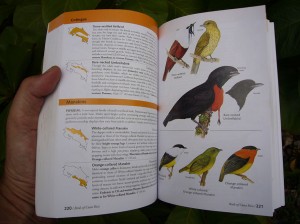Here’s an explanation from our resident naturalist expert, Yahaira, on what makes for the amazing degree of Costa Rica Biodiversity.
Speciation
A combination of factors has made this small Central American country – 51,100 Sq Km in its terrestrial part – own about 5% of the biodiversity on the planet. In a word, we could define what has happened here: high “speciation.” That is, the emergence of many different species over millions of years culminating in a huge amount of present ones. What is it about Costa Rica in particular that allowed it to be a cauldron for this process?
Latitude
Costa Rica is 10 degrees north of Ecuador, i.e., it belongs to the tropical zone of the globe. It is said that climate stability of the Tropics, where the weather conditions are not extreme usually throughout the year for several million years, has allowed the emergence of many species through evolution. These sites served as refuges of life in difficult times in history, such as the glaciations. Elsewhere, the advancing ice decreased organisms radiation and speciation was slowed or even truncated for some taxonomic groups.
Microclimates
Its position between two large bodies of water, along with its narrow field allows the entry of winds, usually laden with moisture, into the territory. These winds blow in different degrees throughout the year, so its influence is variable in some places, more stable in others. This singularity, together with the system of mountain ranges that cross the country from northwest to southeast and steep changes in elevation from sea level up to 3800 m ( almost 12 000 feet) in the Cerro Chirripó, certainly has great influence in the creation of microclimates . The temperature drops as you ascend the mountain ranges and when the wind full of moisture cools on the rise, rainfall occurs differentially on both strands, Caribbean and Pacific.
Geographic Isolation
Soil types, topography and diverse climates have together served as geographical barriers to stop their distribution agencies specializing in one particular environment, as in the islands (eg, Darwin’s finches in the Galapagos Islands). The Costa Rican Caribbean red frog is not the same as the red frog that lives in the Pacific, to name an example.
 Hopefully this has helped you understand why Costa Rica is famous for its biodiversity.
Hopefully this has helped you understand why Costa Rica is famous for its biodiversity.
And if these issues are your thing, we invite you to come to the laboratory of life, where your next adventure may be a mixture of adrenaline, a little splash of wonder and knowledge.
Check out our Costa Rica Eco-Tour and other Costa Rica vacation package designs to see Costa Rica Biodiversity up close and personal!
Leave a Reply